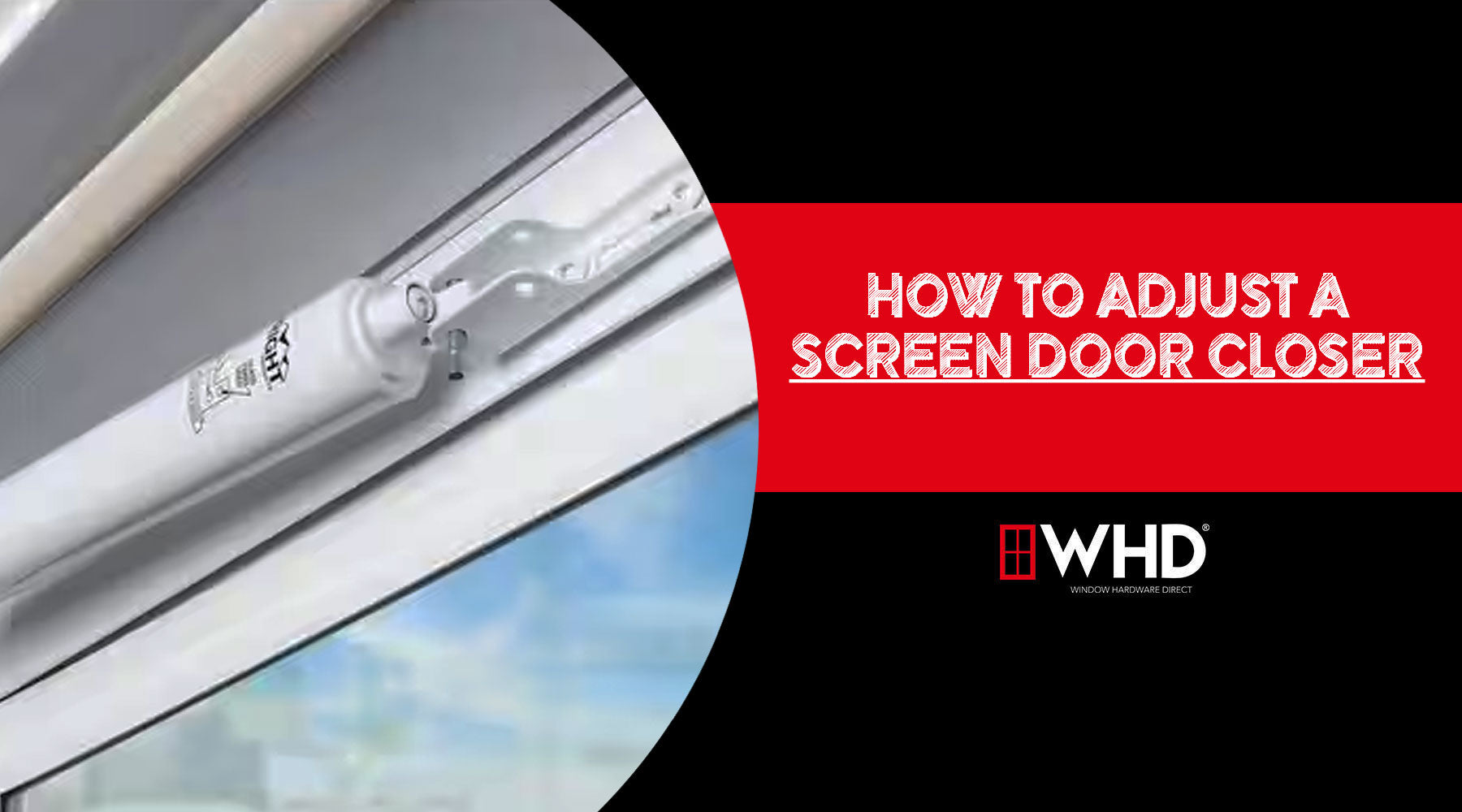
How to Adjust a Screen Door Closer: A Step-by-Step Guide
Screen doors are a convenient way to let fresh air in while keeping insects out, but if the door doesn’t close properly, it can be more frustrating than helpful. Whether your screen door slams shut or doesn't close all the way, learning how to adjust a screen door closer can save you time, money, and unnecessary wear on your door.
In this article, we’ll walk you through what a screen door closer does, common issues, and how to adjust it correctly.
What Is a Screen Door Closer?
A screen door closer is a hydraulic or pneumatic cylinder that controls the speed and force with which a screen door closes. It ensures the door closes gently and securely, preventing slamming and ensuring the latch engages properly.
Why Adjust a Screen Door Closer?
There are several reasons why you might need to make an adjustment:
-
The door slams shut too quickly
-
The door closes too slowly or not completely
-
The latch doesn’t catch
-
The door is hard to open or doesn’t stay open when you want it to
Fortunately, most of these issues can be solved with a few simple adjustments.
Tools You’ll Need:
-
Phillips or flat-head screwdriver (depending on your closer)
-
Step stool (if the closer is mounted higher)
-
Optional: Adjustable wrench for tension screws
How to Adjust a Screen Door Closer
1. Identify the Type of Closer
Most residential screen door closers are pneumatic (air-filled) and mounted at the top of the door. They typically have adjustment screws on one or both ends.

2. Check the Adjustment Screw(s)
There are usually one or two screws that control the speed:
-
Main adjustment screw: Controls how quickly the door closes
-
Latch adjustment screw (if present): Controls how hard the door shuts in the last few inches
Turn the screw clockwise to tighten (slower movement) or counterclockwise to loosen (faster movement).

3. Adjust Closing Speed
Start by turning the main adjustment screw a quarter-turn at a time. After each turn, open the door fully and let it close naturally. Keep adjusting until the door closes at a comfortable, controlled speed.

4. Fine-Tune the Latching Speed
If your door closes almost all the way but doesn’t latch, adjust the latch screw (if your closer has one). This typically controls the last 6–12 inches of movement. Increase the force slightly until the latch clicks shut securely.

5. Test and Repeat as Needed
It may take a few tries to get the perfect balance of speed and force. Be patient and make small adjustments.

*Bonus Tip: Adjust the Bracket or Arm
If the door still doesn’t behave properly after adjusting the screws, check the mounting bracket or arm. The position of the arm can impact how the closer works:
-
Too tight: The door won’t open easily
-
Too loose: The door may not close at all
Reposition the arm slightly and retighten the screws if necessary.
When to Replace the Door Closer
If you've tried all adjustments and the door still won’t close properly, the internal mechanism may be worn out. Screen door closers are inexpensive and relatively easy to replace.
Conclusion
Knowing how to adjust a screen door closer is a simple DIY task that can dramatically improve your door’s performance. With just a few tools and a little patience, you can eliminate door slamming, ensure smooth operation, and keep your home secure and comfortable.
Whether you're adjusting speed, latch strength, or arm tension, a few small tweaks can make a big difference. For more information on screen door closers or help ordering a replacement, Contact the WHD Team! We look forward to assisting you.
